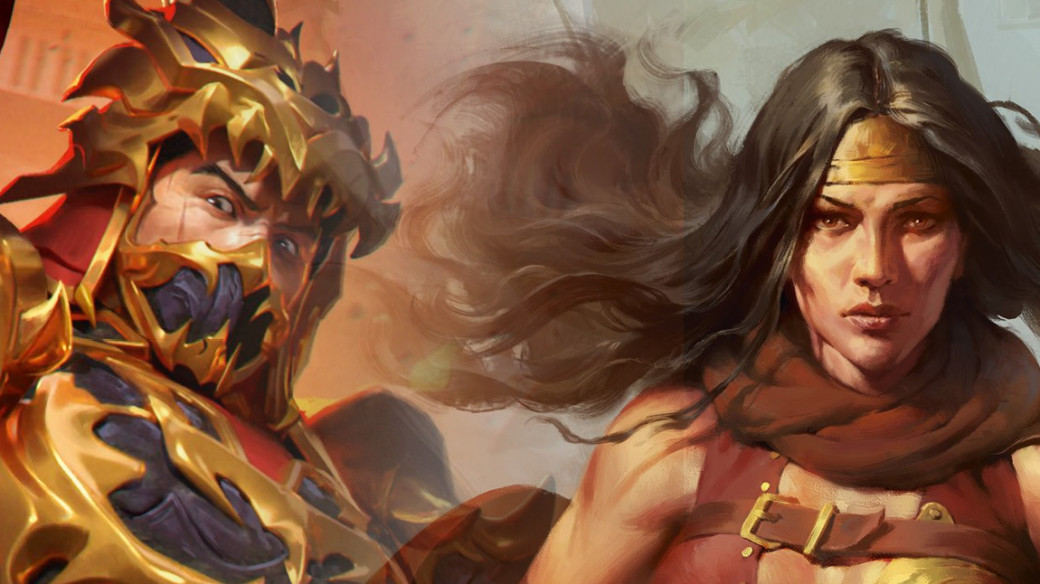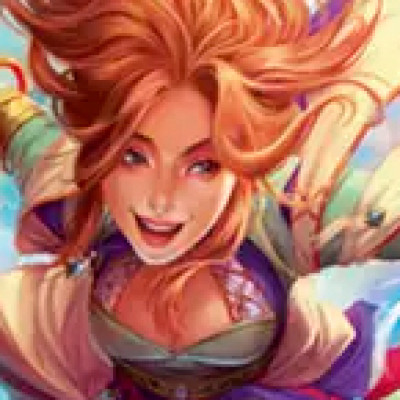A major feature of Flesh and Blood is the variety of heroes and the lanes that they fill both in canon and in gameplay. Plenty of heroes share Talents, Classes, or even both while approaching the game and interactions with their opponents in wildly different ways. Today let's talk about two heroes with an exceptional number of similarities: Kassai and Fang. Competition for a specific role in a meta invariably leads to one option rising above and forcing the other to either adapt or be relegated to use only among the cultists and fanatics. Yet in the case of Kassai and Fang, we’ve seen both heroes achieve a degree of consistent use and solid conversion rates at large events.
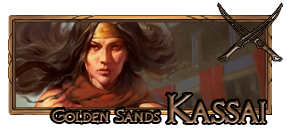
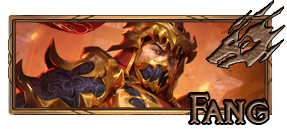
To fully understand the situation, we need to look at the similarities and the differences. When and why should one be picked over the other?
Armor (similar)
As any Warrior main will tell you, the Warrior fridge is as predictable as it is effective. Chest, Arm, and Leg slots are copy and paste for any Warrior hero swinging multiple weapons in a turn.



Kassai will often see consistent use out of Grains of Bloodspill’s ability to create Vigor tokens throughout a game, as opposed to Fang who really only cares about the extra token creation at the very beginning of games while he’s attempting to get the Fealty train rolling. Valiant Dynamo continues to prove itself as one of the best armor pieces in the game by pushing the Warrior value train turn after turn. Kassai will get a slight advantage here, as longer games that push the total block value of Dynamo into the 12-15 range align nicely with her gameplan. Braveforge Bracers generally present 3 extra health and not much else, as the arm piece requires the first weapon to hit and 1 resource to be paid to gain 1 extra attack value on the next weapon swing. Due to the highly conditional nature of Braveforge Bracers, actually pitching into the 1 value is usually reserved solely for clunky turn cycles with too many resources or games where the blue-heavy second or third cycle turns rely on razor-thin margins to seal the deal.



The head slot finally presents some room to swap cards and differentiate identities. Kassai generally presents Crown of Dominion to prime her coffers for the Sellsword creation and card draw to come. Fang relies heavily on the Crown of Providence to filter awkward hands early and help avoid a little bit of disruption while he builds his Fealty to shift into high gear and show his strength. All Warriors are usually carrying the Kabuto of Imperial Authority in the sideboard to stymie turns where the opponent’s weapon swings would present far more than 2 value.
Though both Warriors will use their armor differently, both are positioned similarly with no clear “winner” here.
Value (similar)
Warriors have been criticized for quite some time for lacking a true identity that sets them apart from other classes. As Assassins gained ground and meta shares, they encroached upon the biggest thing that Warriors could call their own: reaction-based play (and often at better rates than Warrior cards). Since then, we’ve seen the Warrior class lean into turn-over-turn value as their calling card, a trait both Kassai and Fang own authoritatively.

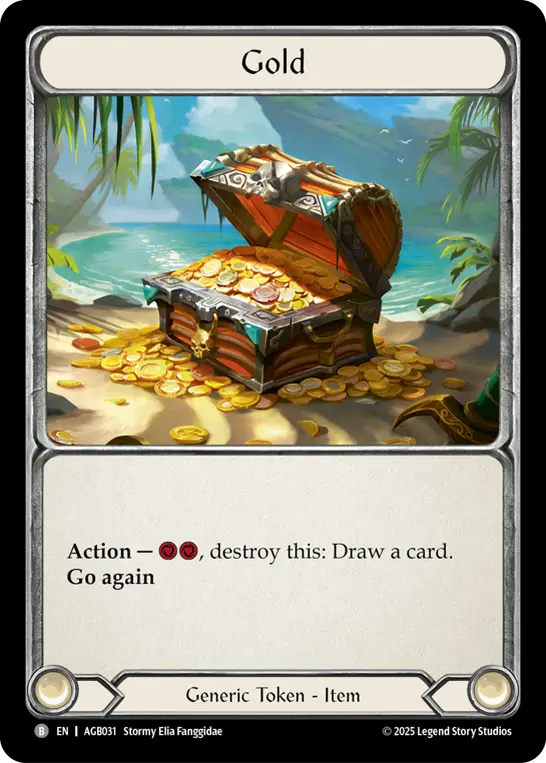

Kassai has some of the best 2-card hands in the game. Midrange builds often carry 6-9 defense reactions, resulting in signature turn cycles that look something like:
- A 3 block (generally, Kassai doesn’t carry any cards that block for 2) and Dynamo on link 1.
- Fate Foreseen on link 2.
- During her turn, pitch a blue to draw from a Gold token (drawing, let's say, a Sink Below seen with Fate Foreseen’s opt).
- Activate Kassai and swing both swords, with the floating 1 paying for a Blade Runner (R).
The resulting value of that cycle is 8 on defense, 7 on offense, while also going up a d-react for the arsenal, clearing the -1 from Dynamo, and threatening a Gold.

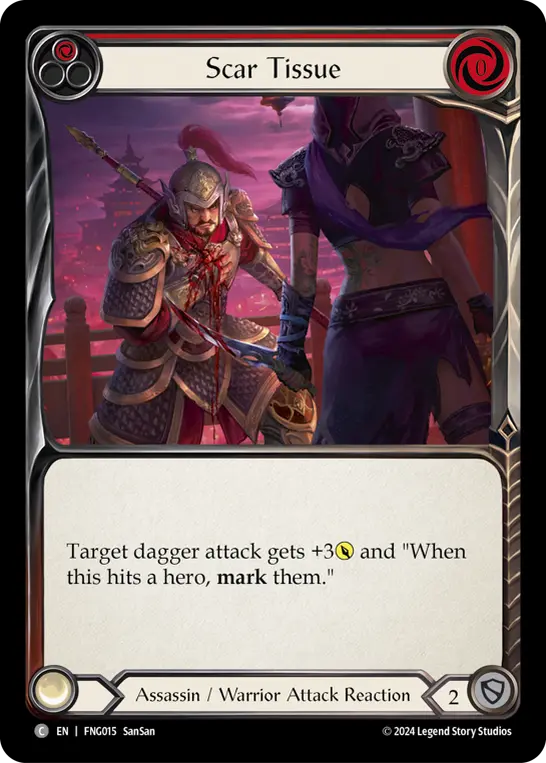
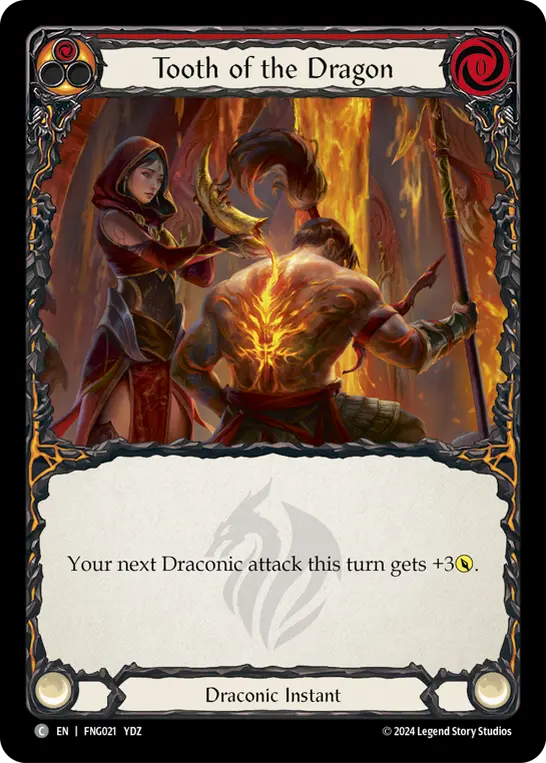

Fang takes the value perspective and skews it toward the offensive. Once 3+ Fealty have been created, out-racing Fang becomes a Herculean task. Hands that brick hard early game become nightmares for opponents late. Let’s look at a hand consisting of Hunt’s End, Scar Tissue (R), Tooth of the Dragon, and For the Dracai.
With Fealty tokens up, the first Fire Vein goes to 6 damage from Hunt’s End, the second goes to 5 with Scar Tissue and Tooth of the Dragon, and the capstone For the Dracai is pumped to 7 for a total damage output of 18 while threatening Marking the opponent and more Fealty creation to insulate from future disruption. Considering the obligatory block with Dynamo and subsequent resetting, we can comfortably call it a 20-value turn cycle. Acknowledging that this is a good turn - but not one that would be considered a power turn - Fang’s effectiveness is evident.
Flexibility (similar)
Dual-wielding Warriors that play at reaction speed present flexibility for themselves and discomfort for opponents that few archetypes can match. Both Kassai and Fang can ask really difficult questions of their opponents, questions that often have no winning answer.



Threatening Gold creation off of Kassai’s ability pressures a fork for opponents. Preventing Gold creation is recommended, but if you're lacking a defense reaction in arsenal, that requires a block from hand. But does that trigger reprise on an Overpower or Glint the Quicksilver? Blocking with an attack action might push the Cintari Saber to a breakpoint if a Blade Flurry is lurking. Too much block value on the first sword gets punished by a Provoke taking another card, or a Blade Runner pumping the second sword to a guaranteed hit. The new Blood Follows Blade punishes opponents not blocking by creating an ally that has to be dealt with, or any extra resource will convert to 3 more damage every turn.

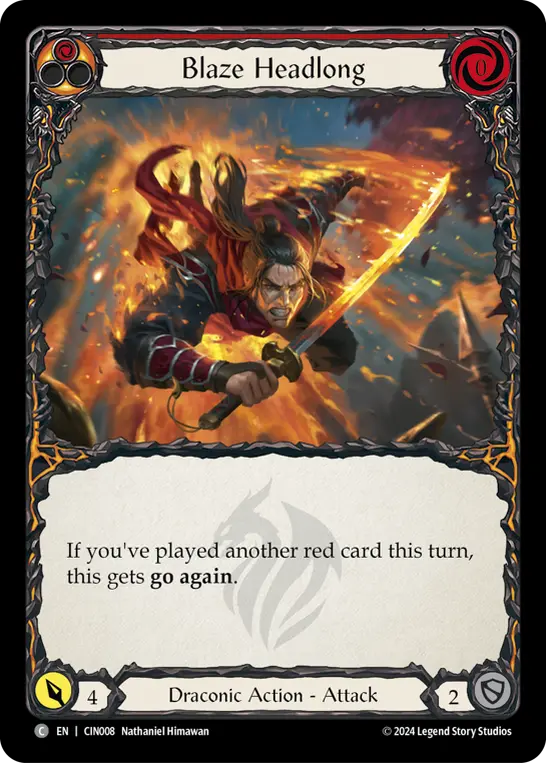
Fang often proves even more elusive with pushing damage through. Attempting to not get hit while Marked can be an impossible task when Fang can drop multiple reactions on one dagger to pump the damage output into the double digits after the blocking phase or cards like Long Whisker Loyalty can create additional dagger swings to sidestep large blocks. The second dagger swing on a turn is usually the attack that presents more additional effects, like Fealty creation or applying the Marked status on-hit, but can end up just being a Tooth of the Dragon played in reactions into a For the Dracai or Blaze Headlong for 7 to end the turn just when you thought you were out of the woods.
Due to their weapon-based gameplay, dual weapon warriors like Kassai and Fang are all but impervious to fatigue strategies or long term protracted defensive approaches, provided their pilot identifies and adjusts the gameplan to not spend cards when they aren’t necessary.
Resiliency (advantage Kassai)
I lead with the similarities, but now let's start examining the places where these heroes diverge from one another. These are the reasons why a pilot might elect to bring one of these Warriors over the other.
The first of two major arguments against Fang is the delicate nature of his board. Auras and aura tokens have been primary design elements of recent sets, most notably The Hunted and Super Slam. With the rise of aura play patterns, we also find specific hate. Scour, Cut Through the Facade, Condemn to Slaughter, Blast to Oblivion, Vaporize // Shock, Clash of Bravado, Runic Reclamation, and Pop the Bubble are all cards that can destroy Fealty tokens with varying levels of interaction from the Fang pilot. Wizards are the bane of all Warriors’ existence, but Fang feels particularly cursed when the Wizard can fit Scour into the 80.


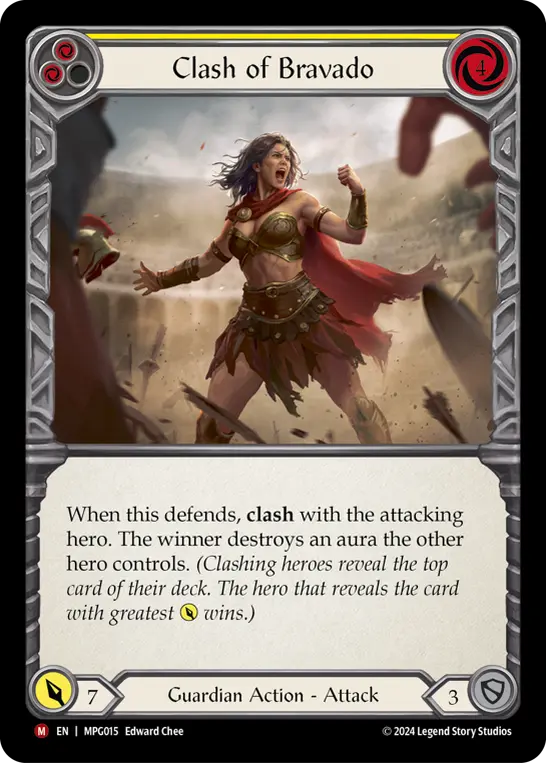
In addition to Fealty destruction, we find the second main weakness: Fang generally packs a heavy amount of inefficient blocking cards (Lukas Proske’s 5th place list at Calling: Hamburg had 23 cards that blocked for 2, and 8 more cards with no blocking value at all) that often leaves him unable to prevent heavy on-hits and disruption like Command and Conquer, Boom Grenades, Red Fin Harpoon, Widespread Annihilation, and many more. Being a Draconic hero, Fang will always be geared toward going fast, hitting hard, and playing out lots of red cards that are worth way more as offense rather than defense. There is a heavy element of a Draconic hammer only seeing nails everywhere he looks.
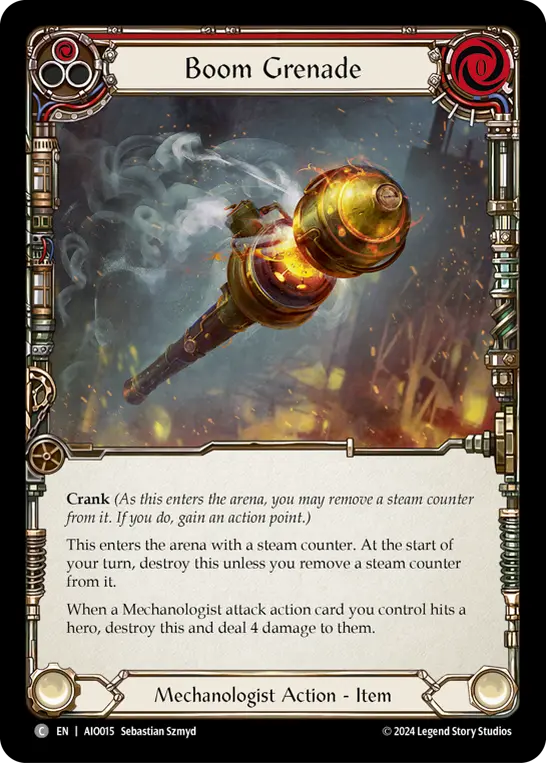
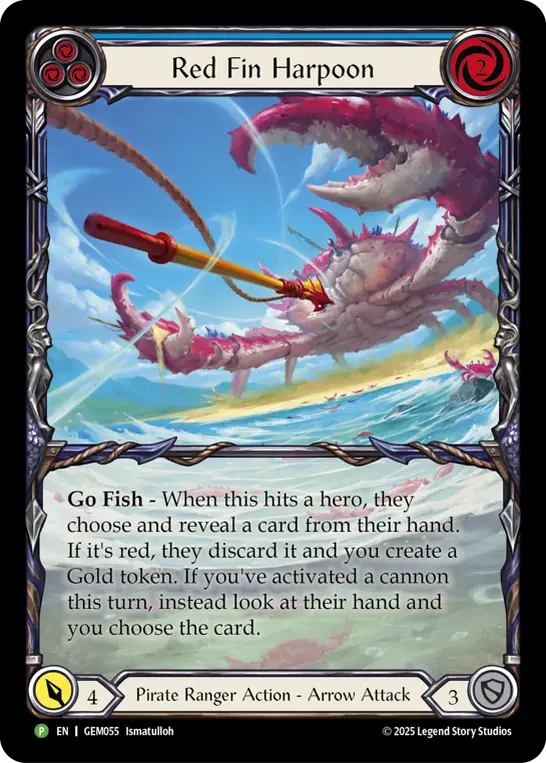

In contrast, one of Kassai’s greatest strengths is her ability to adjust her gameplan to what wins against the person on the other side of the table.
- Guardians can’t clear boards with their lack of go again? Make Cintari Sellswords.
- Value-based Ira trying to grind you out? Cut Kodachi value in half by stuffing them with Dynamo and present on-hits to pit your 2-card hands against hers until you hit your spike turn with Blood on Her Hands.
- Dash IO (DIO) threatening Boom Grenades every turn? Effectively block her out and threaten fatigue.
While aura hate is pretty widespread with every class gaining access to at least decent generics, item hate is much harder to come by. Pirates carrying the Gold Baited Hook are by far the biggest threat to Kassai's gameplan, but Marlynn does not want to be anywhere near a Kassai, Puffin prefers Cogwerx Tinker Rings, and sitting on Gold against Gravy means you're not clearing his allies.

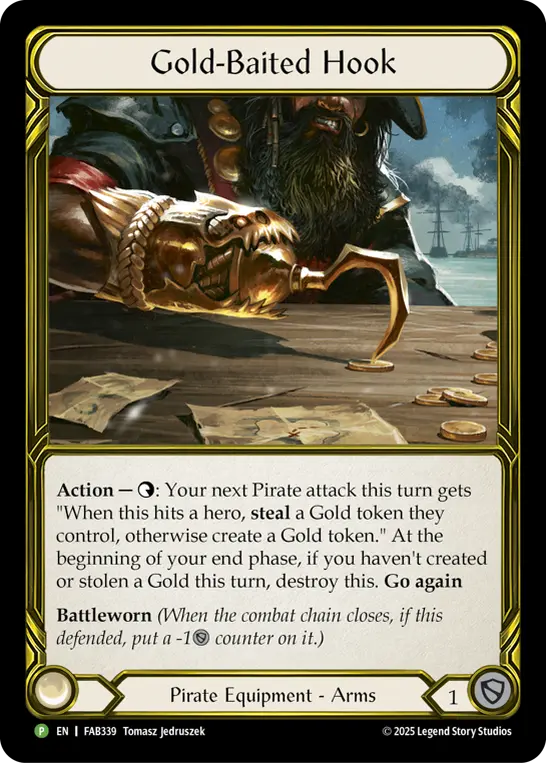

Some builds of Kassai (notably the “Drawsai” approach) are much more susceptible to Marlynn’s overpower-ed Harpoons, Mech’s Pulsewave Harpoon, or a turn-ending Warmonger’s Diplomacy, but note that midrange variants are more insulated to these issues and can shrug them off with little issue on most turns.
Aggression (advantage Fang)
An aggressive Draconic hero shouldn’t surprise anyone, but the ferocity with which Fang can present damage once he’s set up is really difficult to deal with. Even the most aggressive-slanted Kassai lists simply can’t keep up with the damage output Fang presents turn by turn. Into other setup heroes like Florian and Verdance that want to get their hero abilities turned on before they start doing really impactful plays, Fang has a much higher success rate than his Cintari frenemy. That trend is evident in the data (we’ll talk about that more below) into heroes that need a little time to get going. Ira, Levia, Lyath, Marlynn, and Pleiades are likely to be in kill range before they really come online, provided Fang gets the engine running early.
Kassai can certainly present a good amount of aggression as well, but can’t push enough early to provide the same kind of pressure, supporting her good (but still lower) win rate into the final quintet mentioned for Fang. This is supported in much more impressive fashion by looking at both heroes playing into the Earth opponents. Based on data from FABlazing, Kassai gives up a brutal 26.6 percentage points in win rate when compared to Fang against opposing Florians, and trails Fang by 5.2 percentage points into Verdance. While not as stark of a difference into the arguable Best Deck In Format, note that Verdance is a <40% win rate for both Kassai and Fang, so there’s not much room to be worse.
Matching Into Aggro (advantage Kassai)
While Fang has fantastic aggression, he isn’t the most aggressive hero out there due to his need to get rolling first. Because of this, he tends to struggle mightily into the heroes that want to do what he is doing, but are doing it faster. Marionette, Cindra, Dash I/O, and Vynnset tend to flip the aggression conversation on its head. Fang doesn’t block out well enough early, while often needing to keep his whole hand to pitch 2 reds and swing both daggers, leaving him in a health or armor deficit that he has to claw back from. While most games tend to open this way - with Fang quickly making up the difference - the hyper-aggro of the format don’t usually let off of the gas for long enough to let Fang close that gap.
Conversely, Kassai’s blocking ability allows her to get enough value each turn to passively fatigue opponents with defensive and offensive pressure. If Dash I/O wants to push any amount of pressure over Kassai’s defenses, she often has to take a turn to do some setting up and building her board, which leaves openings for strong counters on offense and stashing of defense reactions into the arsenal to counter that big push. The Vynnsett matchup is another that shows off Kassai’s superior access to blues and better blocking cards, which give her more opportunities to block out and force Vynnset into awkward situations while she takes passive blood debt. Kassai boasts a whopping 23.4 more percentage points into DIO compared to Fang, and nearly 13 points over Fang into Vynnset.
Playing the Meta
Since the dawn of competitive card competitions, conventional thinking dictates you choose one of 4 lanes:
- Play the Best Deck In Format.
- Play the counter to BDIF.
- Play the deck that counters the counter to the BDIF.
- Play the Dark Horse.
In other games, many of us have seen this wisdom materialize, and savvy players listen to their gut and choose one of these lanes that pays off big. To see if we can apply this approach, let’s look at the current meta.

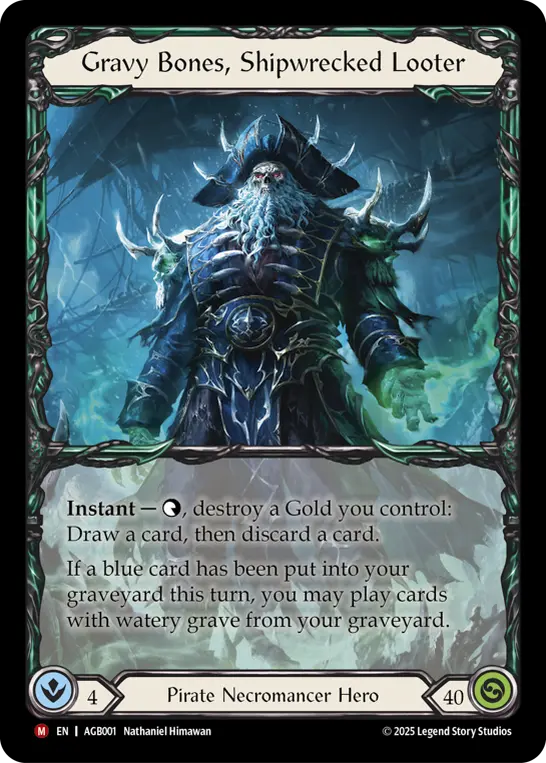

At the time of writing, the meta is defined by a rather stable triangle. Cindra, Verdance, and Gravy Bones represent the strongest offensive, defensive, and board state archetypes respectively. These will be “The Big 3” that must be answered. Let’s go through my most recent attempt to prepare for a local ProQuest as an exercise in using the data we have available to decide between Fang and Kassai as a microcosm for differentiating the strengths of the two.
Looking at FABlazing information on both the spread of all win rates as well as focusing on the win rates of Fang and Kassai against “The Big 3” bosses of the format, we essentially have to decide which matchup we think we’re going to see more of and which one we’re willing to give up some points into. Understanding that raw data can often be misleading and not exactly representative of what we’re going to see in person, we’ll just use this data as a starting point.
The first thing that jumps out when looking at aggregated win rate data for Kassai and Fang is the massive bump Kassai has into Cindra. 21 percentage points over Fang into Cindra confirms what any amount of playtesting will tell you: Fang struggles here, and Kassai is pretty comfortable.
Both heroes are solid into Gravy, with the understanding that a skilled Gravy pilot makes all the difference in the world. Gravy is a very difficult deck to pilot, leading to inexperienced pilots swaying data to look better than it is against the only Necromancer in format. Either way we’re going to have to respect this pairing, but both Warriors should be favored.
Verdance is a much closer race, judging by the numbers. 5 percentage points in Fang’s favor is solid enough to warrant serious consideration into a very difficult pairing.
Massaging Matchups
After looking into how we match into The Big 3, we should consider if we have any ability to play specific hate cards to swing things in our favor. Kassai would have to address Verdance, and Fang would have to address Cindra.

If we had enough room in the sideboard, Kassai could build out an aggro package into Verdance and push Cintari Sellswords as early as possible. Testing shows that creation of 2 or more Sellswords by the end of turn 3 increased win rates substantially. As for Fang, Parched Terrain could also make the 80, but numbers after its release have shown that it’s far more impactful into Florian than it is into Verdance, and Florian is already a heavily Fang-favored pairing.
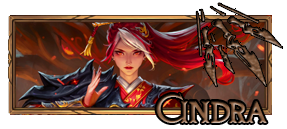
Fang could plan on 3 sideboard slots for Sink Below, but those 3 alone are unlikely to swing the Cindra matchup. That All you Got could make it into the main board, but it would have to do so at the cost of one of the potentially important early pieces. This would mean gaining points into Cindra would come at the cost of consistency and points into other matchups.
But if we're planning for a ProQuest, we have to understand that PQs are meta agnostic to a certain extent. We’re far more likely to play against a Maxx the Hype Nitro at a ProQuest than we are at a Battle Hardened, etc.
Considering the rest of the field, this feels like a Kassai meta. Her data shows a win rate of over 55% into 22 of the 36 other heroes in format. Fang has similar raw numbers, coming in at 21 instances of higher than 55% win rate, but his quality of favorable matchups suffers quite a bit more. Cindra, Prism, Kayo, Verdance, and Dash I/O can all be found in the sub-45% section - two of “The Big 3”, two other very popular aggro decks, and a fan favorite.
Determining what heroes we’re likely to face in a competitive tournament will always be a lottery, but we can usually rely upon being more successful in dodging certain heroes based on if you win or lose early games. With all due respect to Riptide mains, winning round 1 decreases one’s chances of pairing into Riptide for the remainder of the tournament. This is a double-edged dagger, as wanting to dodge Cindras isn’t going to get any easier as we win our first couple of rounds.
Final Considerations
We looked at conventional thinking towards deck selection earlier, but we never did pick a lane. For better or worse it’s just never going to be that simple in Flesh and Blood. The game is too complex, with too many unique heroes approaching the game in different ways.
In the example we went over together here, I picked Kassai for her current position to attack two sides of the triangle that sits atop the meta, sideboard options available at the time to help with the big matchups, play into the rest of expected heroes, and overall flexibility to adjust to each situation once the games have started.
As things change and heroes move in and out of Classic Constructed, card pools expand, and Talents/Classes interact with each other in new ways, fellow fans of the “dual Warrior” will have to keep coming back to reassess who to bring to events. A key piece to remember is that you’ll have to be the one piloting a deck throughout an event, so it’s always viable to pick the deck you like piloting the most. Staying loose, enjoying yourself, and skill expression can certainly overcome a few percentage points.
I hope a peek into my approach has helped provide some insight and helped you make more informed decisions for your next event.
Pass priority to end turn, clear Dynamo.

